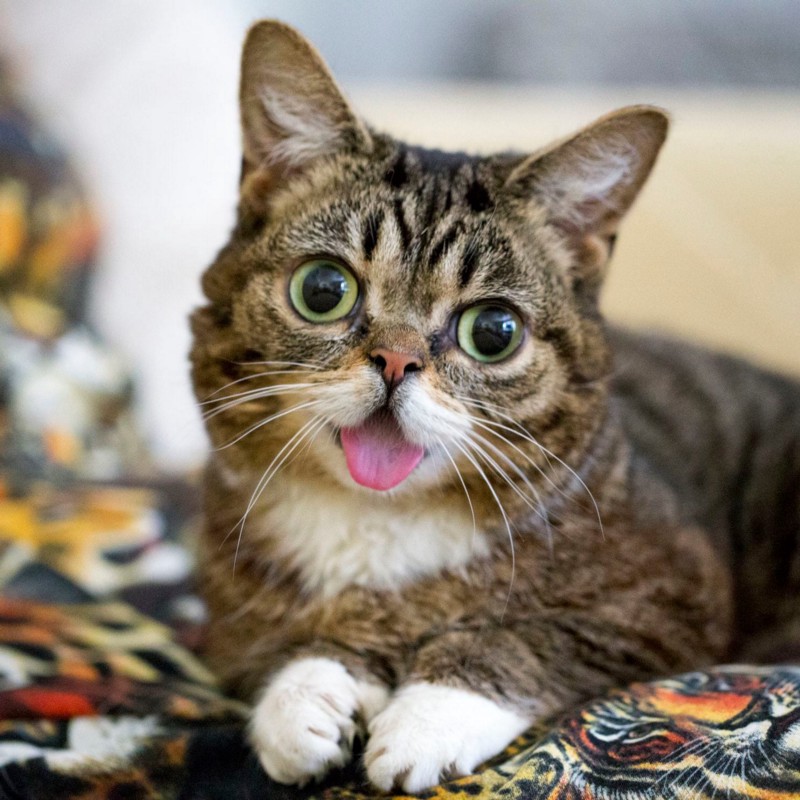Celebrity Cat Lil Bub Helps Penn and German Researchers Draw Public Attention to Genetics

By Lauren Salig
In 2015, a group of curious researchers set out to sequence the genome of a celebrity cat named Lil Bub. They were hoping to understand the genetics behind Lil Bub’s extra toes and unique skeletal structure, which contribute to her heart-warming, kitten-like appearance. However, an equally important goal of their “LilBUBome” project was to invite the general public into the world of genetics.

Orsolya “Uschi” Symmons, a postdoctoral researcher at Penn in Associate Professor of Bioengineering Arjun Raj’s lab, led the research team along with Darío Lupiáñez at the Max-Delbrück Center for Molecular Medicine in Berlin, and Daniel Ibrahim at the Max Planck Institute for Molecular Genetics in Berlin. Lil Bub’s owner, Mike Bridavsky, also contributed to the project.
Because of Lil Bub’s online fame, the project garnered attention from her fans and the media, all hoping to discover the secret to Lil Bub’s charm. As early as 2015, Gizmodo’s Kiona Smith-Strickland reported on the team’s intentions to sequence Lil Bub’s genome, and, since then, many have been awaiting the results of the LilBUBome.
Now that the results are published as a preprint paper on bioRXIV, the media has continued to cover this story about a group of researchers who used the public’s love of an endearing cat to open up a conversation about genetics.
Symmons talked to Science’s Michael Price about how the team harnessed Lil Bub’s publicity to involve her followers in every aspect of the project, from crowdsourcing funds on experiment.com to explaining the research process to fans.
But before explaining the research to Lil Bub’s fans, the team first had to describe genetic sequencing to Bridavsky:
“He’s incredibly open and super excited about everything Bub-related. He’s not a scientist, so throughout the whole process we were keeping in touch and breaking everything down for him about what we were finding and why it was interesting,” said Symmons in the interview.
Just like Lil Bub’s owner, many of her followers wanted to learn about Lil Bub’s genetics but didn’t have a scientific background. The researchers endeavored to make their work transparent by providing updates on the LilBUBome blog where they answered questions like how much DNA is needed to do sequencing, how do you actually sequence DNA, and what do their results mean?
By discussing their research in a clear way that avoided jargon and included visual aids, the team helped make genetics a more approachable topic for those following the LilBUBome project.
Now, after completing the LilBUBome, the researchers can appreciate how they were able to leverage Lil Bub’s celebrity to fund important genetic research but also to awaken an excitement for genetics in a broad audience.
Karin Brulliard of The Washington Post mentions how meaningful this connection with the general public was to the researchers:
“After having long seen his friends ‘immediately fall asleep because they don’t care,’ when hearing about his work, Lupianez said he’s most proud that the project got regular people excited about genetics — with the help of a feline superstar, of course.”
Read more coverage on the LilBUBome:
“Genome Sequencing Offers Clues About Celebrity Cat Lil Bub’s Unusual Appearance”
Meilan Solly, Smithsonian
“Why Is Lil Bub Such a Famous Cat? It’s in Her Blood. Literally”
Megan Molteni, Wired
